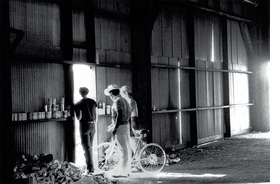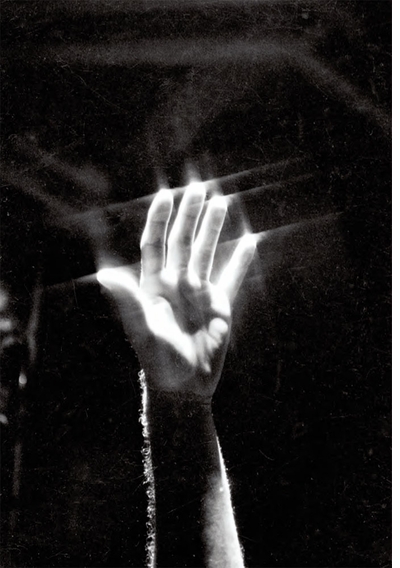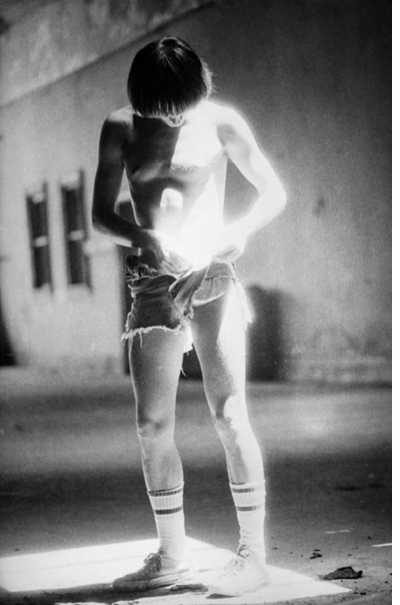À cette époque, les entrepôts abandonnés situés sous les jetées de West Side à Manhattan sont devenus une partie de la ville anarchique et oubliée, qui a abrité la mouvance gay, le trafic de drogue, la prostitution et les suicides.
Baltrop a documenté cette scène, capturant sans broncher et obsessionnellement tout, des présences nues éphémères dans des environnements architecturaux mutilés aux scènes de sexe explicite et de raids policiers sur les jetées. Son travail est peu connu et sous-publié – principalement en raison de son sujet sans faille – mais bien que souvent explicites, ses photographies sont à égalité avec celles de Nan Goldin, Peter Hujar et Enrique Metenides.
Alors que le monde extérieur voyait New York comme le terrain de jeu glamour du Studio 54, le gang de Warhol et l’ère disco, Baltrop a photographié le revers graveleux de la ville; son travail est une partie importante de la culture gay et de l’histoire de New York elle-même. Ce volume relié en tissu rassemble la série Piers en une monographie définitive, un puissant hommage à un monde oublié depuis longtemps aux marges délabrées de la ville.
Alvin Baltrop (1948-2004) est né dans le Bronx, à New York, et a passé la majeure partie de sa vie à vivre et à travailler à New York. De 1969 à 1972, il a servi dans la guerre du Vietnam et a commencé à photographier ses camarades. À son retour, il s’inscrit à la School of the Visual Arts de New York, où il étudie de 1973 à 1975. Après avoir exercé divers métiers – vendeur, créateur de bijoux, imprimeur – il s’installe sur les rives du West Side de Manhattan, où il produirait l’essentiel de sa production photographique. ; sous la direction de James Reid et Tom Watt, préface de Glenn O’Brien, photos en n.b.
“Although initially terrified of the piers, I began to take these photos as a voyeur [and] soon grew determined to preserve the frightening, mad, unbelievable, violent, and beautiful things that were going on at that time,” Baltrop wrote in the preface to an unfinished book of these photographs. “To get certain shots, I hung from the ceilings of several warehouses utilizing a makeshift harness, watching and waiting for hours to record the lives that these people led (friends, acquaintances, and strangers), and the unfortunate ends that they sometimes met.” -Alvin Baltrop.
During that era, the derelict warehouses beneath Manhattan’s West Side piers became a lawless, forgotten part of the city that played host to gay cruising, drug smuggling, prostitution and suicides.
Baltrop documented this scene, unflinchingly and obsessively capturing everything from fleeting naked figures in mangled architectural environments to scenes of explicit sex and police raids on the piers. His work is little known and underpublished–mainly due to its unflinching subject matter–but while often explicit, his photographs are on a par with those of Nan Goldin, Peter Hujar and Enrique Metenides.
While the outside world saw New York as the glamorous playground of Studio 54, Warhol’s gang and the disco era, Baltrop photographed the city’s gritty flipside; his work is an important part of both gay culture and the history of New York itself. This clothbound volume compiles the Piers series in one definitive monograph, a powerful tribute to a long-forgotten world at the city’s dilapidated margins.
Alvin Baltrop (1948-2004) was born in the Bronx, New York, and spent most of his life living and working in New York City. From 1969 to 1972, he served in the Vietnam War and began photographing his comrades. Upon his return, he enrolled in the School of the Visual Arts in New York, where he studied f





